Mammals
Mammals of the Denmark region
- Western Grey Kangaroo (Macropus fuliginosus)
- Brush Tail Possum (Trichosurus vulpecula)
- Southern Brown Bandicoot (Quenda) (Isoodon obesulus)
- Chuditch (Dasyurus geoffroii) A nationally-listed Vulnerable species.
- Brush-tailed Phascogale (Phascogale tapoatafa)
- Honey Possum (Tarsipes rostratus)
- Pygmy Possum (Cercartetus concinnus)
- Grey-Bellied Dunnart (Smithsopsis grisoventer)
- Bush Rat (Rattus fuscipes)
- Water Rat (Hydromys chrysogaster)

Brush Tail Possum (Trichosurus vulpecula)
Reptiles
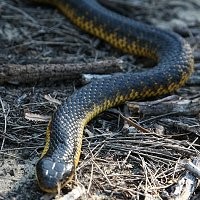
Reptiles of the Denmark region
- Tiger Snake (Notechis scutatus)
- Dugite (Pseudonaja affinis)
- King skink (Egernia kingii)
- Racehorse goanna (Varanus rosenbergi)
Frogs
Frogs of the Wilson Inlet
There are four main species of frog found around the Wilson Inlet: the Motorbike Frog (Litoria moorei), Pobblebonk Frog (Lymnodynastes dorsalis), Moaning Frog (Heleioporus eyrie) and the Quacking Frog (Crinia georgiana). Frogs breathe primarily through their moist skin, which is a poor barrier to pollutants in the environment.
The Quacking frog is found only in the south western corner of WA, particularly along the south coast. These sensitive frogs breed between June and October and rely on wetlands for finding shallow pools of water where they can lay their eggs. They do not cope well in saline or polluted water.
Frogs of the Denmark region
- Banjo frog (Limnodynastes dorsalis)
- Clicking frog (Crinea glauerti)
- Lea’s frog (Geocrinea leai)
- Moaning frog (Heleioporus eyrie)
- Motorbike frog (Litoria moorei)
- Quacking frog (Crinea georgiana)
- Sand frog (Helioporus psammophilus)
- Slender tree frog (Litoria adelaidensis)
- South Coast froglet (Crinea subinsignifera)
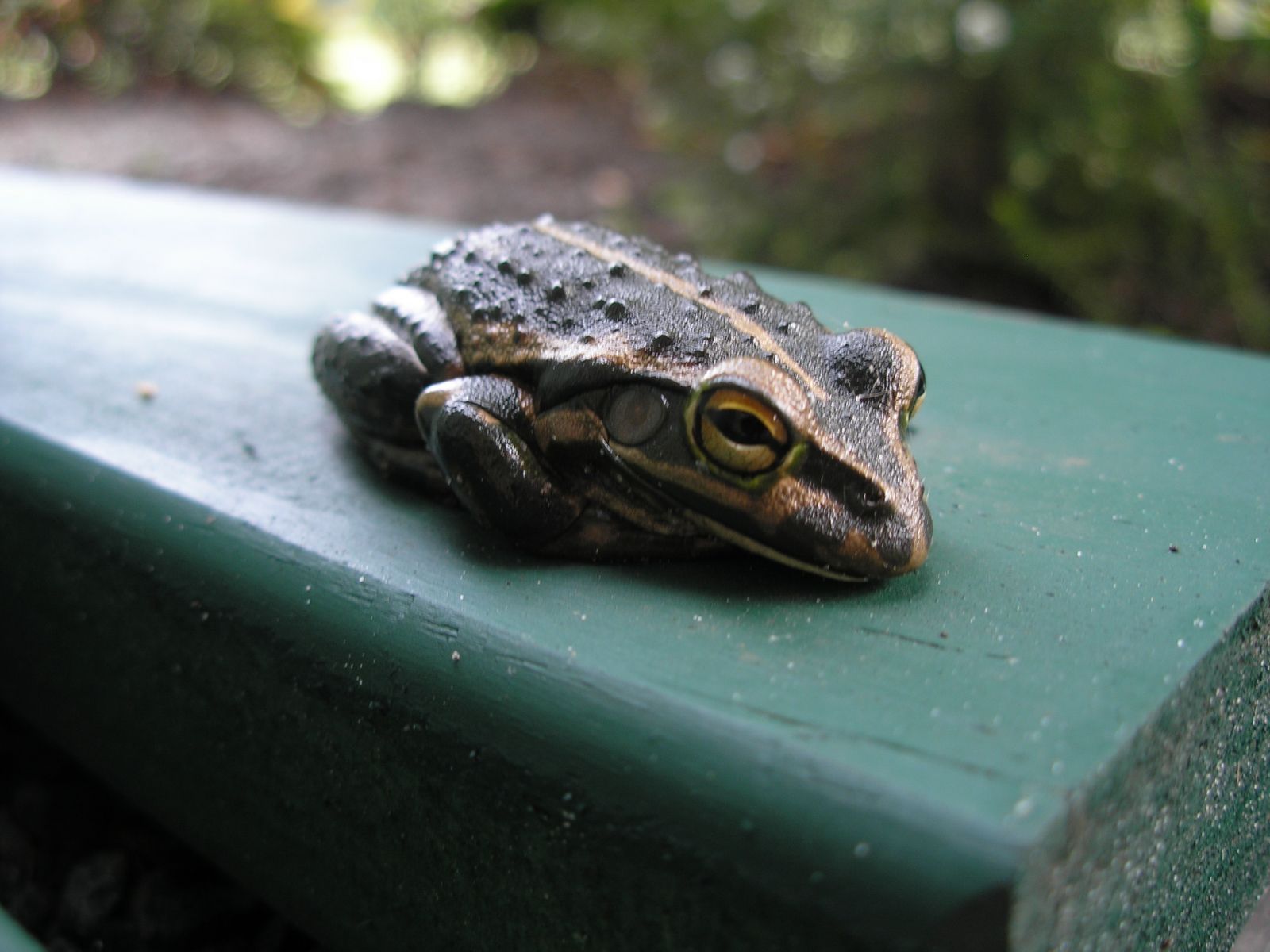
Turtles
The southwestern snake-necked turtle (Chelodina oblonga) is endemic to southwest Western Australia and potentially under threat of extinction.
The Shire of Denmark has partnered with Murdoch University and the Perth South West Metropolitan Alliance to deliver the next phase of the exciting and critical project: Saving our southwestern Snake-necked Turtle.
The project engages with people across southwest WA in hands-on conservation and citizen science to better understand and protect this iconic species. The project will provide critical information that will be used to create and implement conservation management plans with input from and shared with all partners.
Murdoch University will provide scientific expertise, citizen science training and support from the Turtle Ecology Team at the Harry Butler Institute, in association with NatureLink Perth and in collaboration with a national consortium (1 Million Turtles) dedicated to conserving freshwater turtles across Australia.
Community volunteers will be supported through the Department of Biodiversity, Conservation and Attractions Parks and Wildlife Volunteer program.
Please visit the Saving Our Snake-necked Turtle webpage for further information.
It’s full of all sorts of interesting and useful information on turtles and the SOSNT project. Our ‘Turtle Tracker’ volunteer communities can use the site to find out about upcoming info and training sessions, how they can help our turtles, and discover the latest SOSNT news.

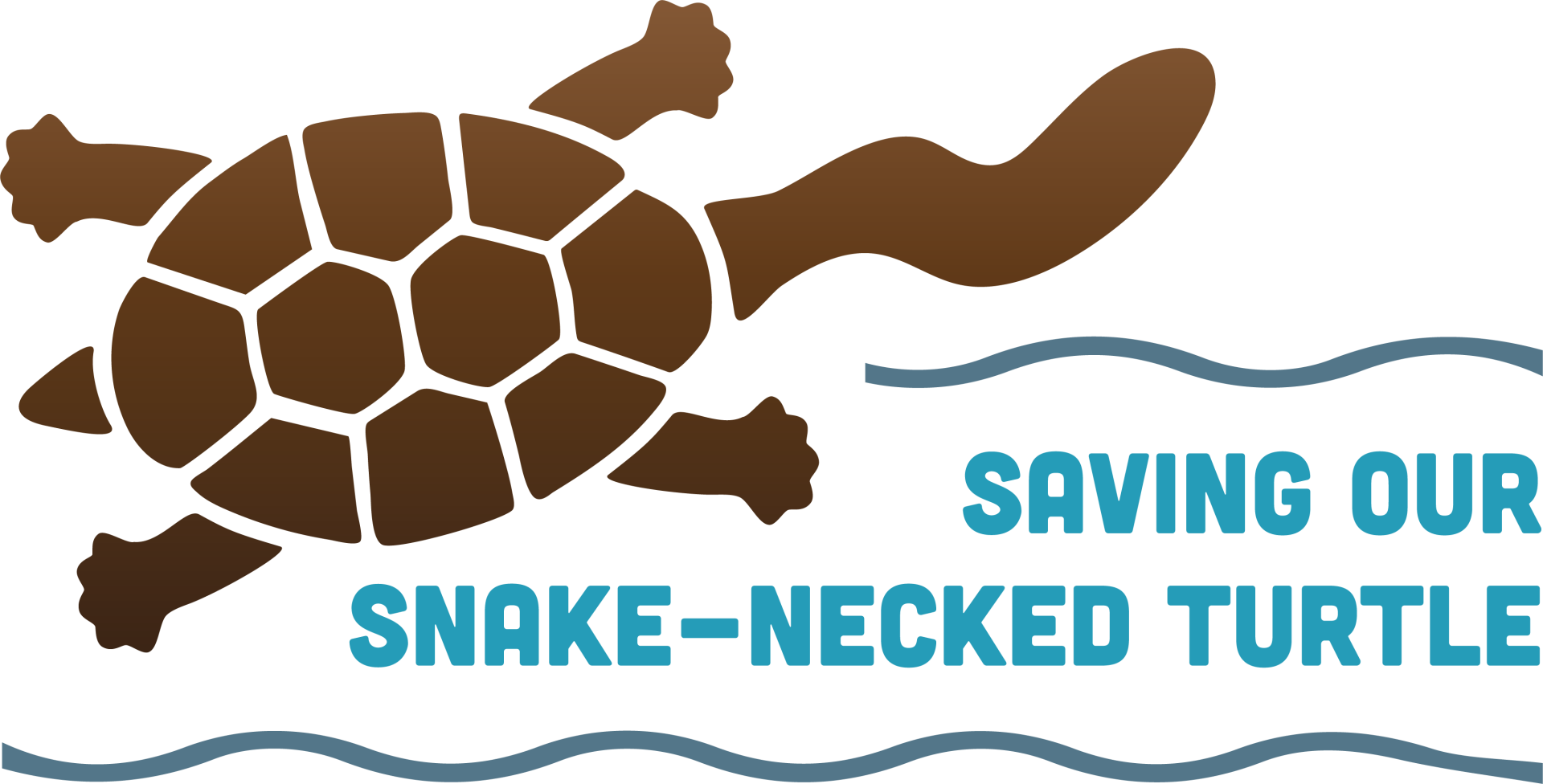
Birds
Wetlands and estuaries, such as Wilson Inlet, are home to over seventy species of waterbirds, shorebirds and seabirds. Significant threats to migratory and resident shorebirds and waterbirds include disturbance from recreational activities such as four-wheel driving and high use visitation, particularly during feeding and breeding times where birds such as the hooded plover lays its nest as a shallow burrow in the sand. Responsible code-off road behaviour such as sticking to the tracks, watching out for wildlife and taking your rubbish home with you can help minimise adverse impacts to our coastal and estuarine ecosystems and the important habitat it provides to birds and our local wildlife.
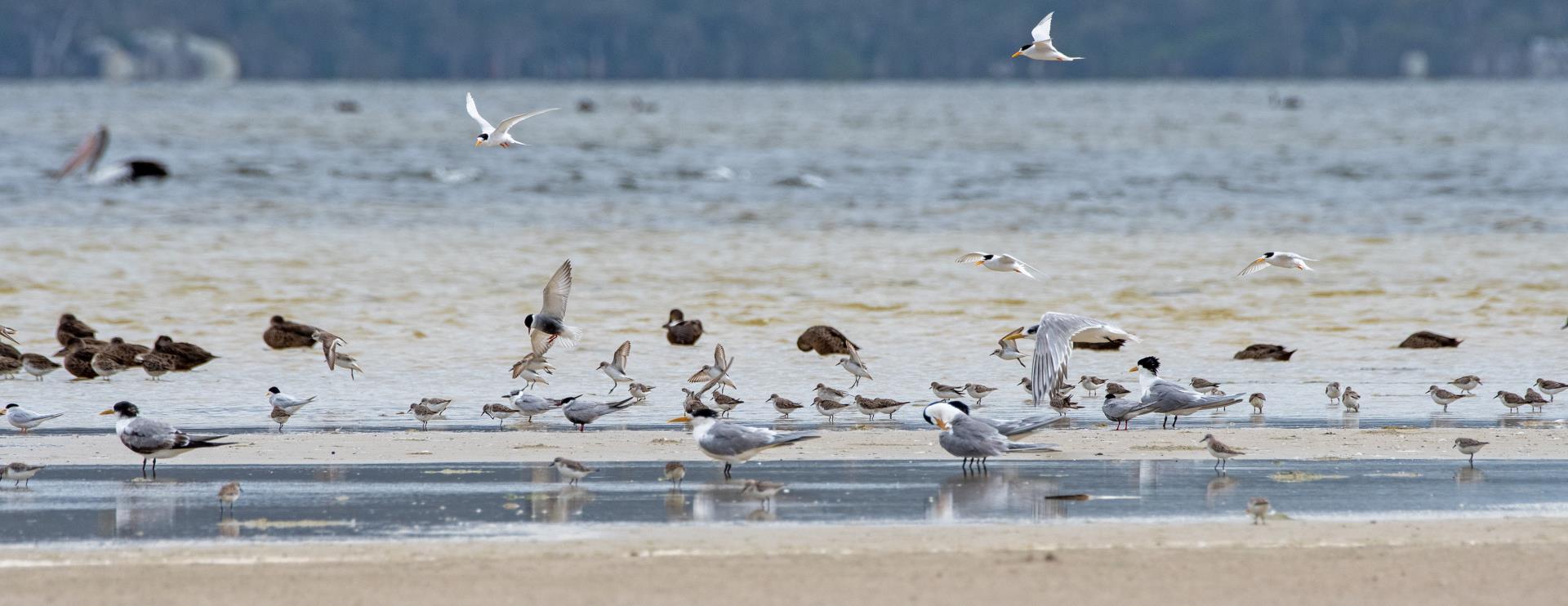
Photograph by John Anderson.
Shorebirds of the Denmark region
- Red-necked Stint (migratory)
- Bar-tailed Godwit (migratory)
- Greenshank (migratory)
- Great Knot (migratory, Critically Endangered)
- Banded Stilt
- Red-necked Avocet
- Red-capped Plover
- Hooded Plover
Waterbirds of the Denmark region
- Grey Teal
- Musk Duck
- Australian Shelduck
- Great Egret
- Hoary-headed Grebe
- Pacific Black Duck
- Yellow-billed Spoonbill
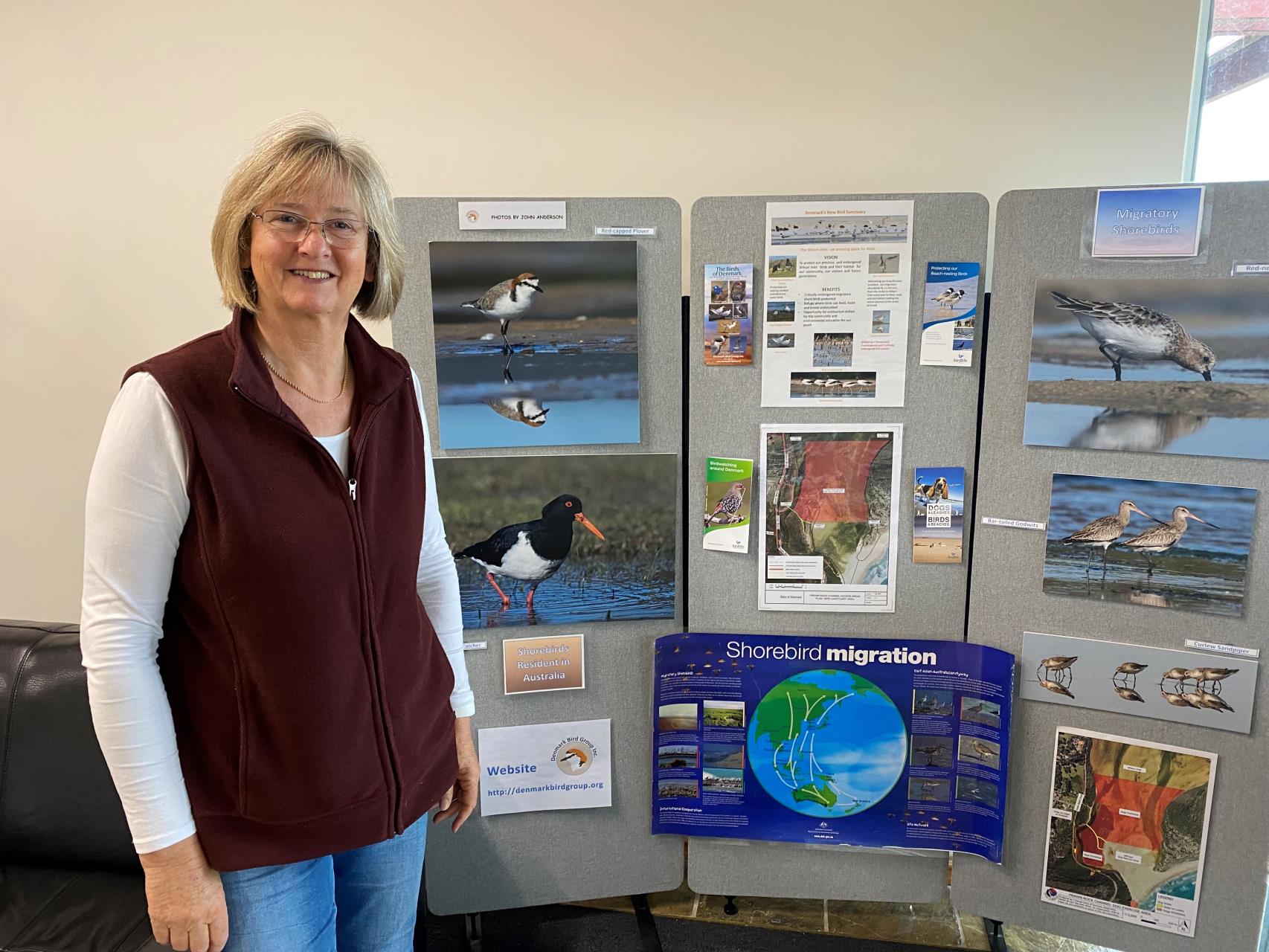
Denmark Bird Group (Kirsty Anderson) Prawn Rock Channel Bird Sanctuary display
Protection of all Native Animals
All Australian native animals, including kangaroos, magpies and Black Cockatoos, are protected under State and Commonwealth law. No person is able to keep, injure or kill native Australian wildlife without the appropriate licence from the Department of Biodiversity, Conservation and Attractions.
Fauna licencing
Information on fauna licencing is managed through DBCA and includes application forms to keep reptiles and conduct kangaroo shooting operations and can be accessed through the following weblink: Department of Biodiversity Conservation and Attractions Flora and Fauna Licencing
Wildlife Welfare
Concerns and queries about injured wildlife should be directed to the Department of Biodiversity, Conservation and Attractions (DBCA) Frankland District Office in Walpole on (08) 9840 0400 or through the DBCA Wildcare Helpline on (08) 9474 9055 and weblink: https://www.dbca.wa.gov.au/contact-us/wildcare-helpline
Information on how to prepare and care for injured wildlife can be found in the following information sheets:
Animal Welfare
Glove Box Guide for Injured Native Wildlife.
For further information or contact numbers in relation to Wildlife welfare for the Great Southern Region, please refer to the following link: https://www.greatsouthernlive.com.au/wildlife-rescue-numbers-for-albany-and-surrounds/
Domestic stock enquiries should be directed to Department of Primary Industries and Regional Development (DPIRD) on 1300 374 731 or DPIRD website at: https://www.wa.gov.au/organisation/department-of-primary-industries-and-regional-development
Fauna Documents
Native Mammals Fact Sheet
Frogs of the Wilson Inlet
How to set up a Frog-friendly Habitat Garden
Plant list for Frog-friendly Garden
Wildlife on Private Property
Bird watching around Denmark
The Birds of Denmark
Denmark's Top Birdwatching Sites
Migratory and Resident Shorebirds of Wilson Inlet
Wilson Inlet Foreshore and Mount Hallowell Reserves Fauna Survey (2011)
Fauna Website Links
Australian Museum
Birdlife Australia
Frogs of Australia
Denmark Bird Group